Monday Mix-Up: God Save The Archies
https://www.youtube.com/watch?v=sgnLL17QmTM
How did we get to this one before Bleeding Cool?
https://www.youtube.com/watch?v=sgnLL17QmTM
How did we get to this one before Bleeding Cool?
On a recent Saturday morning, I treated myself to yet another TV comic book show. But unlike Flash, or S.H.I.E.L.D., or iZombie or Arrow, this was an old one. TCM is showing episodes of the 1943 Batman movie serial. I’m sure you know about these serials. Long ago, kids would make weekly pilgrimages to the theater for cliffhanger style chapters of an adventure serial. Often it was shoehorned between a cartoon, a newsreel, and the main feature. During my recent TCM viewing, I was disappointed that the host didn’t offer any of his usual insightful perceptions.
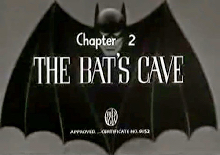 This serial is important in “geek mythology” for all sorts of reasons, including the debut of the Bat Cave. But then a peculiar childhood memory was triggered. And I mused about how this peculiar incident was just a pale precursor to a big branding issue that seems to dominate today’s entertainment world: the struggle to understand who really owns a brand.
This serial is important in “geek mythology” for all sorts of reasons, including the debut of the Bat Cave. But then a peculiar childhood memory was triggered. And I mused about how this peculiar incident was just a pale precursor to a big branding issue that seems to dominate today’s entertainment world: the struggle to understand who really owns a brand.
As a quick background, I was one of those kids who was influenced brainwashed by the 1966 Batman TV show. After just a few episodes, my brain exploded and my worldview was set forever. But when I become a teenager, a strange thing happened. At that time, I was reading those moody Batman comics of the seventies. It was at that point where I realized that the 66 Batman was ‘camp’, and it wasn’t the version of Batman that I was then enjoying. I wanted my version of Batman, or The Batman, to be serious, dark, and un-silly. I was essentially rejecting that horse I rode in on. I was cherry-picking from the different entertainment offerings what I felt was best for this brand called Batman.
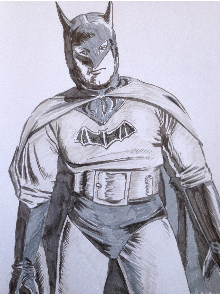 And, back then, there were no Chris Nolan or Tim Burton visions of Batman for the world at large to see. Everyone who wasn’t reading the comics equated Batman with the silly fun of POW/ZLONK/BOFF! My vision of the brand was in conflict with the brand understanding of the world at large.
And, back then, there were no Chris Nolan or Tim Burton visions of Batman for the world at large to see. Everyone who wasn’t reading the comics equated Batman with the silly fun of POW/ZLONK/BOFF! My vision of the brand was in conflict with the brand understanding of the world at large.
And that’s about the time that my dad introduced me to the 1943 Batman serial. It was actually edited versions on Super 8 film. We’d show these on our home movie projector. Even though they didn’t have sound, they were glorious! Batman was purposeful and focused, whether he was slugging gangsters or flirting with the female lead. It was full of zombies and radium guns and cliffhangers. The bad guy even fed his enemies to crocodiles. (Who knew that the fella who was playing an evil Japanese stereotype would soon be a big hit during the golden age of radio playing a comedic Italian stereotype?)
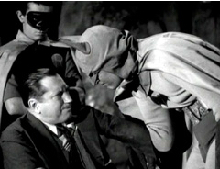 Oh sure, Robin looked a little goofy, those pesky capes got in the way of brawling, and Batman’s ears made him look like the devil…but that was the all fine. He was foreboding and mysterious. The opening credits were somber and menacing. To me, as a teenager, this is what I wanted “my Batman” to be. I was creating my personal brand vision of Batman by combing the comics of the day with vintage movies. And it was in complete conflict with most of the country thought of as Batman.
Oh sure, Robin looked a little goofy, those pesky capes got in the way of brawling, and Batman’s ears made him look like the devil…but that was the all fine. He was foreboding and mysterious. The opening credits were somber and menacing. To me, as a teenager, this is what I wanted “my Batman” to be. I was creating my personal brand vision of Batman by combing the comics of the day with vintage movies. And it was in complete conflict with most of the country thought of as Batman.
And that’s exactly what’s happening in the passionate pocket universe of Geek Culture right now. Engaged fans each have their own vision of what a character or brand should be like. They then analyze, anguish and appraise the interpretations fed back to them. Fans want their brands the way they want them. Despite the fact that most comics are created by publishing professionals, and that most TV Shows/Movies are made by filmmaking professionals, Geek fans don’t trust these folks to handle their brands in the correct way. Instead, fans judge and speculate to see if the brand they are being offered fits with the brand they each think is the true brand. They don’t only judge a book by its cover; they judge the book by the preview of the cover.
Does this happen with other brands?
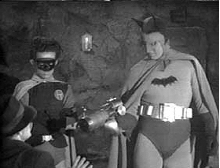 Can you imagine years ago, readers making demands for, or clearly laying out their expectations, for Hemingway’s next book? Or could you imagine 1950s western fans outlining their expectations for the third season of Maverick? Can you imagine Ian Fleming monitoring fan buzz before writing the third or fourth James Bond novel? Of course not. He probably graciously nodded to friends’ cocktail party accolades, was amused that JFK was a fan, and then worked with his editor as he brought his vision of the character to life for the next adventure.
Can you imagine years ago, readers making demands for, or clearly laying out their expectations, for Hemingway’s next book? Or could you imagine 1950s western fans outlining their expectations for the third season of Maverick? Can you imagine Ian Fleming monitoring fan buzz before writing the third or fourth James Bond novel? Of course not. He probably graciously nodded to friends’ cocktail party accolades, was amused that JFK was a fan, and then worked with his editor as he brought his vision of the character to life for the next adventure.
You could argue that fans grab onto the brand ownership in sports. That’s so much of what sports radio is all about. Fantasy Football is also a way to assume total ownership of the brands, and essentially cut out the corporate owners, albeit in parallel universe.
But it doesn’t really happen with traditional brands. Generally, Oreo fans don’t get indignant when the Oreo packaging and logo change. A small percentage do (trust me) but they are just that: a small percentage. The grocery store retailers don’t get mad because they can’t predict the correct quantities to order based on the new “rebooted” packaging for a particular cookie.
Recently, we’ve been teased by trailers for big entertainment movies like the new Star Wars, Mad Max and Batman vs. Superman. Closer in, in the comics world, fans have been offered glimpses of what the Marvel and DC universes will look like after their big summer events. These efforts seem to be the creators, or corporations, saying, “we have a plan, and this is what we’re going to do with your entertainment brand”. And then fans collectively ponder, predict, and prognosticate. Edicts are issued and judgments are rendered. Predictably, the folks in charge of the brand, at least legally and financially, reveal a little more and the cycle continues.
Of course, this all is just further evidence of the combatively symbiotic relationship of brand ownership for entertainment properties. The creators put forth their vision, and then the consumers render their judgment.
But who’s really in charge? Is it those who take the risks? Those who enter the arena of public opinion? Or are the people in charge really those who willingly offer their hard-earned dollars to support the brand? Those who give up their precious time to see what’s being served up?
I’m not sure if there’s an easy answer. I’m typically been on the side of the creators, but the entertainment world has changed since Ian Fleming was typing the James Bond thrillers. One thing I do know is that this all reinforces the notion of pop culture fans as important to branding conversations. Whether they are conversing about a recent reboot of DC’s Suicide Squad, or the new Dr. Pepper Avengers cans or upcoming shows on cable networks or the new Schick Hydro shaving cream, they have an opinion, have made themselves part of the conversation, and have a real ownership in all brands. And that makes it all more fun, doesn’t it
Well, our pal John is a bit under the weather. And, oddly, this weekend the weather is under John as well: he lives fairly close to the epicenter of yesterday’s earthquake in Michigan.
John assures us he’s okay, just tired and probably a bit cranky. As for the earthquake, well, whereas it was felt by people as far away as John’s native Chicago, thankfully there was no damage. Except for some very confused farm animals.
John will be back in this space – or, perhaps, merely “space” – next week.
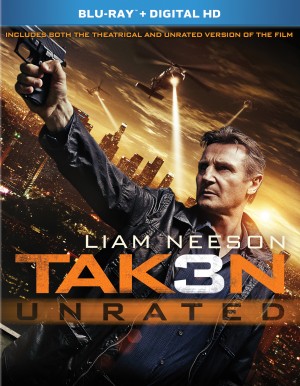 The Taken franchise has worked at all thanks to two people: Luc Besson and Liam Neeson. Besson has seemingly been coasting since 1994’s The Professional and certainly has returned to familiar territory with this franchise. Neeson has stopped showing his considerable acting chops by going the action route pretty much since he picked up a lightsaber. Despite its utter predictability, the first Taken proved enormously popular, especially considering its early 2009 release date.
The Taken franchise has worked at all thanks to two people: Luc Besson and Liam Neeson. Besson has seemingly been coasting since 1994’s The Professional and certainly has returned to familiar territory with this franchise. Neeson has stopped showing his considerable acting chops by going the action route pretty much since he picked up a lightsaber. Despite its utter predictability, the first Taken proved enormously popular, especially considering its early 2009 release date.
The inevitable sequel, Taken 2, mined much the same ground although it varied things just enough that the rescued daughter (Maggie Grace) now helps dad find their missing mom Lenore (Famke Janssen). Enough seemed to be enough and Neeson thought a third chapter was out of the question. 20th Century-Fox thought otherwise and asked Neeson and cowriter Robert Mark Kamen for one more. We were told things would go in another direction but I doubt anyone anticipated it going even lower, down the rabbit hole as it were.
Taken 3, out now on home video from 20th Century Home Entertainment, has Neeson’s rep held hostage and he has to spend nearly two hours trying to reclaim his good name or be arrested for seemingly killing his ex-wife. Of course he didn’t do it and he has to figure out who killed her and why pin it on him? As a result, we have the usual set pieces, the action chases and action fights that keep good stunt people employed. Olivier Megaton is back for his second consecutive turn behind the camera but like the script, brings nothing new to the table. Everything looks swell and blows up just fine but everything about the production feels worn out. Thankfully, the negative criticism and weak box office means Maggie Grace’s newborn baby at the film’s end will be safe from a sequel.
About the best that can be said of this production is that Besson and Kamen knew it needed something more and they tried to actually develop the characters somewhat but it was far too little and way too late.
The Blu-ray transfer is perfectly fine without much to complain about so is swell to look at and the lossless DTS-HD Master Audio 5.1 sound is a solid match.
The Special Features feel just as worn as the feature. The best may be the unrated, extended version that adds about seven minutes of mayhem but you’d be hard pressed to identify those minutes.
There is the “Flashback Malankove” (7:16) deleted scene from the theatrical release followed by Sam’s Bunker, A.K.A. The Rabbit Hole (3:01), a mindless animated “tour” through Neeson’s secret hideaway and its armory. There is also the location-focused Taken to L.A. (4:16); A Taken Legacy (4:54); a Gallery (1:05); and Theatrical Trailer (2:15).
A week ago Friday, my studio mates and I met once again in the hallowed halls of Chicago’s McCormack Place to ring in the first big show of the year for Unshaven Comics. ReedPop’s C2E2 is to the Midwest what SDCC is to the west coast, or Reed’s sister show the New York Comic Con is to the east.
Unlike those two aforementioned behemoths, C2E2 doesn’t come with huge PR stunts, a multitude of multimedia stars, or what I’d personally dub a wave of humanity. Instead, the still-amazingly-large show boasts only one or two A-List celebs, a mish-mash of medium weighted ‘hey, I know [that person]!’, and an endless sea of comic-making talent. I’d dare suggest that comics are still the primary focus of the show. I might be very wrong on that point… but damn it if I’m not an optimist.
The show for we Unshaven Lads wasn’t what I’d hoped. You see, as the business-end of our business (natch), I’ve always adhered to the mandate that when we repeat a show we should see a ten-percent increase in book sales. To me, that represents us continually adding to our meager fan-base, in addition to keeping those on board who are here with us for the ride. This year, the fifth I believe for C2E2, marked the first time we didn’t meet or exceed that goal. And to rub it in, we did nine-percent less than last year. As the dollar and cents guy, my need for explanation has nipped at me all week.
To be honest: I got nothing. The fact is we left that show having sold 330 books and plenty of posters and trading cards. We didn’t meet our goals, but that won’t stop us from returning next year. If anything, it’s motivated us to up our game. More on that to come in future columns.
If I may stray to a tangental story…
You’d be surprised after pitching the same pitch thousands of times we really only hear a handful of responses. Most typically, ‘Wow, what a mouthful!’, ‘Oh my god that’s everything I love!’, ‘Hey [so and so] c’mere and listen to this!’, or the always wonderful ‘Great. Where’s Dan Dougherty’s table?’
Every now and again, a fan when pitched to will turn the tables to present us with unpublished work of their own. Traditionally its done with an air of pity mixed with hope and pride. In their mind, you showed me yours, now I’ll show you mine eventually leads to them hopping behind the table with us after only a cursory glance at their magnum opus. Because clearly our three headed logo deserves a mysterious fourth. Or so I might assume.
As so many of us know, when you want to break in to the comic industry it can feel like an impossible mountain to climb. An artist can produce a portfolio, and if they are skilled enough (and meet deadlines), work is out there – albeit accrued most likely through networking like an insane mental patient. If you’re a budding writer, your choices are far more limited. And every convention we go to… out comes a few of them right to our table. Their hopes placed in our hands, with a pitch in tow. After leaving C2E2, we Unshaven Lads left with a bit of wisdom to share with all those folks who consider this common practice.
The sad truth of it all is that breaking in to comics is as simple as coughing up the time, energy, and money enough to produce work on your own… and then taking that petrifying leap of faith to put it in the hands of unsuspecting strangers in hopes that they’ll want to keep it in exchange for a few shekels. To sell from the fan’s side of the aisle to the creators though crosses an unspoken line. Suffice to say, when we’re on the creator’s side, it’s to sell, not buy. And trust us, we also come to shows to buy.
In an interview long-long ago, the great and powerful forehead of comics, Alex Ross, was noted in saying that the way he broke in was not in effect any particular meeting or casual chit-chat at a con. It was made due to professionalism in his presentation. His portfolio was neat, clean, and presented with confidence. Meetings were sought, and attended with focus and zeal. If Unshaven Comics left the 2015 C2E2 with any advice to give those would-be suitors trying to make it to the other side of the aisle, it’d be to heed that statement.
It could be clear enough that artists in the alley aren’t often seeking new talent to create with. And for those who do, well, they’d be apt to put up a sign about portfolio reviews. But I digress. The truth of the matter is though, that when a fan presents us with their lone copy of their manuscript in a sweaty manila envelope… there’s little to nothing we can do then and there to be of any help. In between pitching, selling, drawing, and networking… being able to focus, read, and absorb someone’s work isn’t going to happen. Instead, a few phrases will be skimmed, while we figure out a way to not be a dick to the fan we’re still trying to sell our own book to.
And when an artist presents his or her portfolio – even if they are amazing – the likelihood that we’ll have the wherewithal to save their contact information and reach out after the show is as apt to happen as DC nabbing a copy of The Samurnauts, and signing us to an exclusive deal.
In the end, we know how hard that road to the other side of the aisle is. And we know because in 2005, we were the ones walking from booth to booth peddling our lone issue of a comic we knew would break us in. Simply put? It didn’t. So we put it out ourselves, and earned our fans one at a time. We’re still doing it now. And faced with less sales than the year past? It’s only made us hungrier for the future.
Consider that a Chicago-sized deep dish pizza for thought.
It’s almost impossible for me to be too positive about Avengers: Age of Ultron. It’s a movie that would have been the movie of my dreams when I was 10 years old, when I was 20 I would have told you there was no chance it would ever happen, even at 25 I would have thought it was far too optimistic. It is as good as superhero movies get and as a life long fan of superheroes I loved it to pieces. I love how the fight sequences feel like playing with a big box of action figures but with a quarter billion dollar budget. I love Joss Whedon’s banter and the performances he gets from his actors each of whom feels perfectly cast. I even love it for the flaws, that it’s a little too packed with winks and teases, that there’s a pervasive refusal to call people by their code names, the dawning realization that I don’t care about Iron Man at all. I’m overjoyed that I’ve been able to see comic book movies get to where they are right now that when the standard bearer for the genre comes back I can only stand back in awe.
James Spader is so unbelievably good as Ultron. I thought Ultron was a mistake as a villain, I just didn’t believe he was interesting enough to pull an entire movie when I never cared for his comics, but Spader is so good I literally couldn’t remember Tom Hiddleston’s name when it was over. Spader turns a character I frequently thought had no personality (and I’ve read very few Ultron stories so it might not be a fair assessment) and turned him in to a character that had a sense of humor, and more importantly a real point of view. There’s a moment early in the film where Ultron accuses Tony Stark of not wanting peace but quiet and after the events of this week in Baltimore that hit particularly hard. While Spader is the glittering jewel of the new cast Elizabeth Olsen is also a treasure, she provides some human emotion to moments that would otherwise feel too large and fantastical to connect with and I’m quite thrilled to have her in the Don Cheadle level of the Marvel Cinematic Universe.
Want some action? We’ve got plenty from two guys who know to create it. From SPAWN to FALCON RISING, Michael Jai White has never shied away from the heat and he proves it again with his new film, SKIN TRADE. Plus Christian Kane balances the thrills in THE LIBRARIANS, but proves his musical side in the new project 50 TO ONE. Now, think about it – wouldn’t he make a great Wolverine? WE ask for his reaction to that.
Be sure to follow us on Twitter @ThePointRadio.
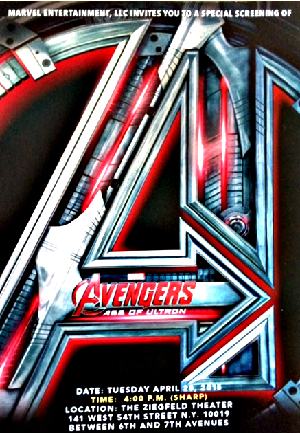 Lucky for me, it was the “friends and family” screening of Avengers: Age of Ulton.
Lucky for me, it was the “friends and family” screening of Avengers: Age of Ulton.
First of all, I was lucky because I got to go. I was lucky to hear Joe Quesada introduce the film, not only because he was amusing but he was gracious enough to thank the event planners before he thanked the Hollywood bosses. Trust me, as someone who has worked events for more than 20 years, it’s unusual when someone says “Thank you.” He also thanked all the people who worked on the books, the source material for the movies.
And I was lucky because of the audience. The people in Manhattan’s Ziegfeld Theater on Tuesday were Marvel (and Disney) employees, freelancers, and their plus-ones. It was the kind of audience that cheered the coming attractions (Ant-Man), of course. They cheered the created-by credits. They cheered Stan Lee. From their cheers, I could tell that I picked up all the Easter eggs, thrown in for the fans in the audience by the fans who made the film.
The film. How was it? There may be SPOILERS, depending on how you define the term, although I will try to avoid the big ones.
If you haven’t seen the first Avengers movie, you might have some problems jumping into the plot of this one. If you haven’t seen any of the Iron Man, Thor or Captain America movies, you may miss a few key character developments. And if you didn’t watch Marvel’s Agents of S.H.I.E.L.D. this week, you missed the set-up.
None of this was a problem for me. I’m going to guess, given the name of this site, that it isn’t a problem for you either.
The plot, as you might surmise from the title, concerns the creation of Ultron, using the Infinity Stone from Loki’s staff (from the first Avengers movie) and Tony Stark’s tech. Ultron runs amok, and the rest of the movie involves our heroes trying to stop him/it. As they do, they first fight and then team-up with Quicksilver and the Scarlet Witch. In the process, many, many places suffer severe damage, including Wakanda.
(During the fight in Wakanda, our heroes must deal with the local police and, later, the military. In both cases, the first faces we see in uniform are white. Given current events, this took me out of the narrative for a beat.)
If I approach this review with my English class lessons, it is difficult to describe. There is no single protagonist, no character who has a transformative story arc. My future husband, Robert Downey, Jr., and the other heroes with their own film franchises (i.e. Captain America and Thor) do very little other than fight and trade quips, once they get past the exposition parts of the dialogue.
Instead, the revealing character moments belong to the Hulk, to Hawkeye, and the Black Widow. If anything is going to rile up the fanboys, it is the changes the movie makes to Hawkeye. Since I haven’t followed the character in the comics (although I’ve enjoyed a bunch of the new version), I wasn’t offended. I think it works for the character in the movie. It explains a lot about his relationship with Black Widow.
Here’s my favorite thing about the version of the Black Widow we get in these movies, a part of her character I credit to Joss Whedon (based on Buffy and Firefly): she not only holds her own with the male characters, but she has relationships with them that are collegial, not romantic. She is, first and foremost, a friend and an ally. While there seems to be some suggestion that she and Bruce Banner might click, even that possibility comes from the trust and respect they have for each other as teammates, not hot bodies.
Ultimately, The Avengers: Age of Ultron suffers from the fate of most middle films in a trilogy. There can’t be a real resolution because then there would be no need for the third movie. Still, there are a lot of pretty people doing a lot of pretty spectacular things, with plenty of explosions and lots and lots of fight scenes in exotic scenery.
Go. You’ll have a good time. Just don’t try to write an English theme about it.